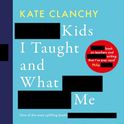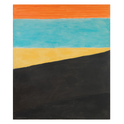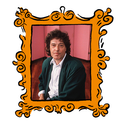If novels were court cases, it would be hard to find impartial jurors for this one. Julie Myerson’s Nonfiction is about the pain of having a drug-addicted child, and anyone who reads books and followed the news in 2009 knows that Myerson has been in this exact position herself. That was the year she published The Lost Child: A True Story, which was about, among other things, her family’s tussle with her teenage son Jake. He had become a violent user of skunk cannabis and had stolen from his parents, attacked them and finally been ejected from the family home. At the same time, he was a troubled and vulnerable young man, only 20 years old at the time of the book’s publication. During the public debacle that followed, it also emerged that Myerson was the author of Living with Teenagers, a column that had been running anonymously in the Guardian for two years,detailing her children’s tumultuous journey through puberty—right down to the first pubic hair. Jake had asked his mother if she was writing the columns and she had lied to him. “Maybe one day my mother will realise that she’s the one who’s addicted and is deluding herself,” he told the Daily Mail.
Maybe not, because in Nonfiction Myerson’s at it again, appearing to offer the next chapter in her family’s travails, albeit with the teasing subtitle: A Novel.
Books should stand apart from their authors’ lives, but that isn’t possible here: we already know so much. Evidently the events of 2009 prompted near-breakdowns in both mother and son. Julie survived breast cancer. Jake progressed from skunk to heroin, though is now recovered. As such a different kind of approach is required here, one that invites you to read the “novel” and add as many or as few of the facts as you want. The book’s existence is itself a provocation because Myerson knows that lots of people don’t approve of the way that she turned her son’s plight into a writing project. There’s a defiance in her return to the scene of the crime.
The first defiant act is to make the drug-addicted teen here a daughter and an only child (in reality Jake has two siblings)—a change so cursory it feels like nose-thumbing at the convention that real people should be given the protection of fiction. My sense is that actual parents might feel differently to the ones in this novel about a drug-addicted daughter sleeping on the streets, as opposed to a son. But there I go tutting and moralising, as Myerson surely expects we will.
There are no names in the novel. The narrative is addressed to “you,” the daughter. The parents are “your father and I.” These fictive parents, just like their real-life counterparts, first learn that their child is using heroin from a school friend who tips them off. The order of events is mixed up, so we move between different points in the daughter’s story: a few months spent in rehab; a night in a mental health unit; some dreadful weeks when the daughter is either missing or angrily present, demanding money; an overdose in a sordid flat. Another storyline concerns the narrator’s own mother, who behaves awfully—at one stage concealing their daughter’s whereabouts—but is revealed to have buried traumas connected with her own parents. There are sections about the narrator’s career as a novelist, including appearances at book festivals and on panels. And there is a love affair between the narrator and an older man, which takes place when her daughter is seven.
All these events are described in the present tense, as though suspended in time. The way they are mixed up provides an interesting charge. It means, for example, that we see the narrator as estranged from her mother at the time of the latter’s death, before seeing them again at another, more harmonious stage in their relationship. The jumbled chronology also seems to mimic the way people’s minds jump between memories and scenarios when they lie awake at night, worrying and wondering where things went wrong. Was it the affair? Was it that minor but traumatic operation the daughter had when she was little? Did the narrator too often prioritise work over motherhood? Myerson puts her protagonist—and herself, I think—painfully through her paces. “I’ve lied. I’ve been greedy. I’ve said yes to things I shouldn’t have said yes to. I’ve hurt the people I love.”
The words “mother” and “father” run through the novel like a litany, reminding me of Philip Larkin’s admonition that it’s mums and dads who fuck us up. In particular, “your father and I” is repeated so often that we can sympathise with the daughter’s complaints that she’s up against a united front. Other than that, it’s hard to sympathise with her. Addiction has made her squalid and selfish. Myerson describes woeful details with the accuracy of first-hand experience. “Your rucksack, which you place on the table in front of us, has a bad smell, rank, like meat. Your eyes are shining and not in a good way. Nothing about you is good or hopeful or pleasant. It occurs to me that if I had not actually given birth to you, I would move away.”
So much is painful, and feels truthful. There’s the kindness of a local pharmacist, who has to oversee the daughter’s gradually reduced regime of opioids in preparation for her stint in rehab, or of a counsellor who is always bright and cheerful. There’s a six-week course on overcoming obsessive rumination that “your father” finds helpful, but that the narrator skips, either because “some kind of inertia comes over me” or, more tellingly, “I don’t know who I am without my most unforgiving and self-lacerating thoughts.”
Other elements in the story are less credible. The mother seemed far too vicious, I thought, until I found out that Myerson was also estranged from her own mother and was even barred from her funeral (thereby hangs another tale, easily found online). The affair, meanwhile, was thin and unconvincing, one party endlessly proclaiming his love while the other gave no evidence of being interesting, let alone lovable.
About two thirds of the way through Nonfiction the narrator encounters a stony-faced audience member at a book festival. I had the strange sensation that I’d come across myself in this character. This woman irritably takes the protagonist to task for her “frustrating” prose style. “This need to write about such extreme things all the time and leave the reader in the dark about everything… I suppose I just don’t get it, that’s all.” I had been feeling much the same. “Get a grip,” I muttered to myself. “Stop making everything about you.”
But that jolt of recognition sent me back to the novel in a different way. I saw that the narrator’s perception of other people as aggressors was a projection of her own guilt: she invited their hostility. And that unconvincing love affair was a kind of chimera—she invented someone to adore her, because she felt so unlovable. The whole novel is, in fact, a “rumination” of the kind that her husband’s course was designed to address. Towards the end of the novel the accretion of what had felt like mere slivers of story amounted to a powerful portrait of despair. By the last page there were tears in my eyes.
This was a book worth writing, then, but should it have been written? In 1972, Elizabeth Bishop criticised her friend and fellow poet Robert Lowell for writing about his marriage. “Aren’t you violating a trust?… Art just isn’t worth that much.”
But art made by people who know what they are talking about is invaluable. No one could have written more honestly about the torment of watching a child descend into addiction than Julie Myerson. Only she and her family will know if she has paid too high a price for it.












